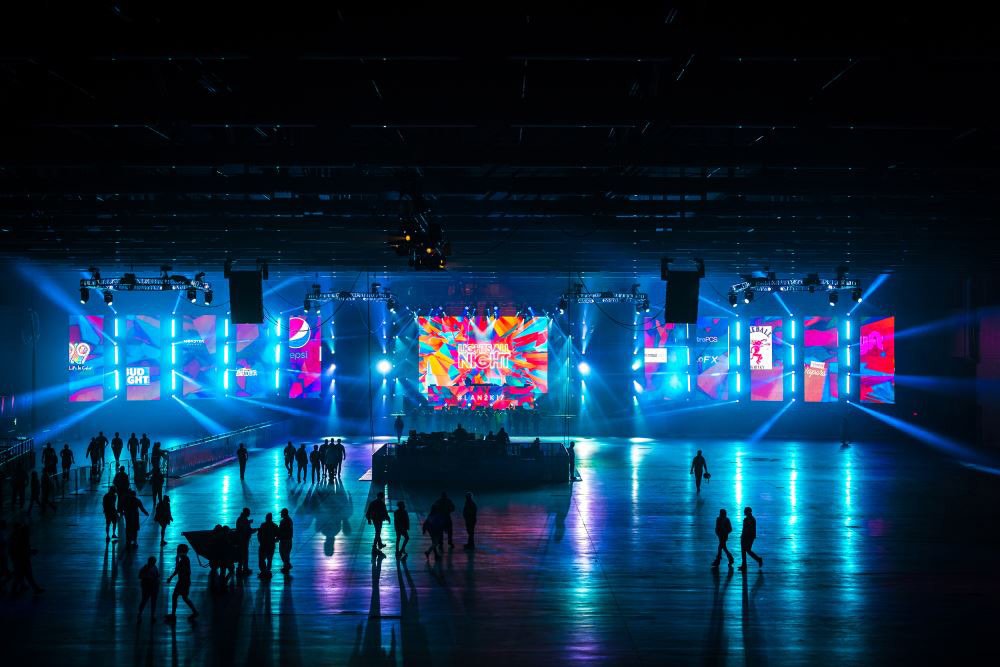SMD, or Surface-Mount Device, screens represent one of the most advanced display technologies used today, especially for LED screens. Known for their high-quality images, durability, and versatility, SMD displays are found in everything from advertising billboards to stage setups and corporate displays. In this article, we’ll explore what a display is, how it works, its key advantages, and where it’s commonly used.

Understanding SMD Screen Technology
An SMD display refers to an LED display technology where tiny LEDs are mounted directly onto the surface of the circuit board. Each pixel in an SMD display is made up of three micro-sized LEDs – one red, one green, and one blue. These LEDs work together to produce a full spectrum of colors, creating vibrant images with a seamless, high-resolution quality. This surface-mount technology allows the screen to be thinner, more durable, and more power-efficient than older LED technologies.
How Does an SMD Display Work?
In an SMD display, each LED is directly attached to the surface of the board without using long connecting wires, which makes the screen compact and enhances its stability. The three LEDs – red, green, and blue – within each pixel combine at various brightness levels to create different colors. This technology produces clear, lifelike images with vivid colors, making it ideal for digital displays where image quality and viewing distance are crucial.
Key Advantages of SMD Display
SMD displays offer several advantages that make them a popular choice across many industries:
- High Image Quality
SMD displays are known for their clarity, sharpness, and vibrant colors, providing an exceptional viewing experience. This makes them a preferred choice for applications like advertisements and entertainment where visual impact is key. - Space Efficiency
With the compact design of SMD technology, these screens are often slimmer and lighter than traditional LED screens. This space efficiency makes them ideal for indoor installations in venues where space might be limited. - Energy Efficiency
SMD displays consume less power, making them more energy-efficient compared to older screen technologies. This feature makes them suitable for continuous operation in commercial settings, as they help in reducing energy costs over time. - Wide Viewing Angles
SMD displays are designed to provide consistent color accuracy from various viewing angles. This means they can be viewed clearly from different directions, making them ideal for large gatherings or public spaces. - Durability
The surface-mount technique offers greater durability to SMD displays, which are built to withstand various environmental conditions, including heat, humidity, and even outdoor elements in some cases.
Common Applications of SMD Screens
Due to their versatility, SMD screens are widely used in different settings:
- Advertising and Digital Signage
SMD screens are widely used in shopping malls, airports, and roadside billboards due to their ability to display vibrant, attention-grabbing images. - Concerts and Events
Large-scale events rely on SMD screens for stage backgrounds and live streaming, offering clear visuals to large audiences even from a distance. - Corporate Presentations and Educational Displays
In corporate offices and educational institutions, SMD screens are used for presentations, video conferencing, and lectures where high-quality visuals are essential. - Information Displays
Airports, train stations, and other transit areas use SMD screens to display real-time information like schedules and announcements clearly and reliably.
Key Differences: SMD vs. Traditional LED Technology
| Feature | SMD Screen | Traditional LED Screen |
| LED Arrangement | Directly mounted on the circuit board | Individually wired to the board |
| Size and Thickness | Thin and lightweight | Often bulkier and heavier |
| Image Resolution | High-quality, vibrant colors | Lower resolution, less sharp |
| Power Consumption | Low (more energy-efficient) | Higher |
| Application Suitability | Indoor and outdoor | Mostly outdoor, limited indoor use |
Factors Affecting the Price of SMD Screens
Several factors can influence the price of an SMD screen in the market, including:
- Screen Size
Larger screens typically cost more due to the increased number of pixels and LEDs. - Resolution
Higher-resolution SMD screens, which provide clearer images, tend to have a higher price. - Brand and Quality
SMD screens from reputable brands or those with added features and warranties may be priced higher than lesser-known alternatives. - Installation Requirements
Installation costs can vary, especially for outdoor SMD screens that require mounting and protective casing.
Final Thoughts
SMD screens have transformed how we experience digital displays, offering vibrant colors, high-resolution images, and versatile applications in indoor and outdoor settings. Whether you’re a business owner looking to attract customers with digital signage or planning a large event that needs clear visuals for everyone in attendance, SMD screens provide a reliable, energy-efficient solution. By understanding what SMD technology offers, it’s easier to make an informed choice about which display options will best meet your needs.




